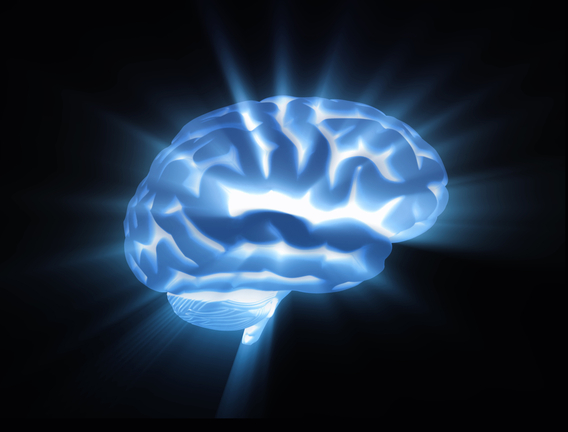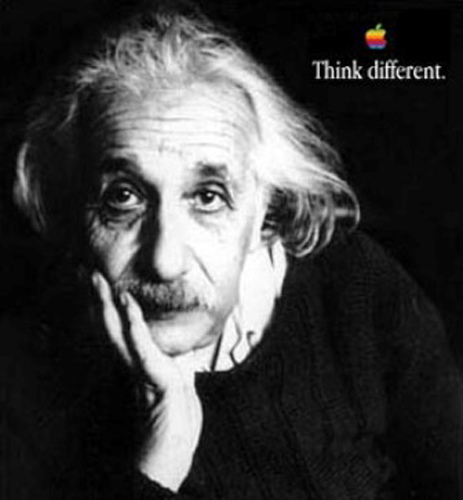If you’ve been following the last few posts here on the blog, you may be thinking what else is there to say about the science of logo design—or what science says about why logos work the way they do? If you’ve missed those previous posts, can review the articles below:
Article: More Logo Design Science
Article: The Science of How Your Logo Design Works
Article: Do I Really Need A Logo Design?
Well, as a matter of fact, there is a bit more to say. Or explain.
 One of the most interesting studies we’ve come across was published in the Journal of Consumer Research and reports that certain logos can change the way you think and behave—just by seeing them. In that study, the researchers showed subjects an Apple logo (too fast for them to have consciously seen it) and then gave them a creativity test. These people performed better on the test than subjects that had been shown an IBM logo.
One of the most interesting studies we’ve come across was published in the Journal of Consumer Research and reports that certain logos can change the way you think and behave—just by seeing them. In that study, the researchers showed subjects an Apple logo (too fast for them to have consciously seen it) and then gave them a creativity test. These people performed better on the test than subjects that had been shown an IBM logo.
They found something similar when they showed people a Disney logo, then asked them to take a test that measured honesty. Those subjects did better on the test than people who had been shown an E! TV logo.
Okay, so this is all interesting. But how does it work?
Neuroscientists have found that certain words, images, and even sounds can “prime” your brain to anticipate certain things.
In the book, Smart Thinking, (we linked to this book last week and highly recommend it), author Art Markman writes about how priming works.
He says that our minds organize information in a sort of relational database. Memories are stored connected to things related to them. So if asked to name as many vegetables as possible, it helps to think of situations where you encounter vegetables—while making a salad, in your refrigerator, or walking through the produce section of a grocery store. Thinking of these situations helps prime your brain to think about vegetables. “Memory is all about connections,” Markman says.
One method psychologists have used to measure the effect of priming is by asking people to identify whether a string of letters is a word or not, by pressing one of two buttons. “If you saw the sequence B-R-A-K-E, you would press the button to say the letters form a word—brake. If you saw the letters B-R-A-I-K, you would press the button to say the letters do not form a word.”
Interestingly, a person who is shown a list of letters like C-A-R-B-R-A-K-E, is faster to identify that brake is a word than someone who is shown a baseline list of letters like: X-X-X-X-B-R-A-K-E. A person who is shown an unrelated word like carrot in the letter string: C-A-R-R-O-T-B-R-A-K-E is slower to respond that brake is a word than the person who is shown the baseline letters with just Xs.
Because there is a connection between CAR and BRAKE, our minds are primed after seeing the first word to think of the second. But where there is no natural connection, as in CARROT and BRAKE, our minds are actually slower to identify the word because no such priming is happening. From the book:
“Having high-quality knowledge is not just about learning things in isolation, it’s about learning the connections among things. Because you use your knowledge to help you understand new situations, you want to have good connections that enable you to bring important information to mind when you are likely to need it. Ultimately your memory wants to provide you with the information you are most likely to need when doing something. As a result, only a small portion of the huge volume of knowledge you have is available to you at any moment. The information that is most likely to be in your working memory when you are doing something is the knowledge that is somehow connected to your previous experiences that relate to that activity.”
This is exactly how a logo design works to trigger a specific thought or behavior. Upon seeing a familiar logo, your mind naturally makes connections to the ideas, feelings, and experiences you’ve had in the past with the brand that the logo represents.
 So in the case of the experiment with the Apple logo: the Apple brand is connected to the idea of creativity. At the time of the experiment, Apple had just run a very successful campaign featuring dozens of creative people like Pablo Picasso, Albert Einstein, Jim Henson, John Lennon, and Albert Hitchcock, along with the tagline: Think Different.
So in the case of the experiment with the Apple logo: the Apple brand is connected to the idea of creativity. At the time of the experiment, Apple had just run a very successful campaign featuring dozens of creative people like Pablo Picasso, Albert Einstein, Jim Henson, John Lennon, and Albert Hitchcock, along with the tagline: Think Different.
Thanks in part to this campaign, the Apple logo has become connected to the idea of creativity. So when test subjects are shown that logo design, they are primed to think more creatively—and perform better on a test of creativity then someone who was shown a technology logo not related to the idea of creativity. The logo primes them for this behavior.
It works for Apple (and apparently Disney), but will it work for you?
The answer is probably a “Yes, but…”
Yes, it can work for you and your logo design, but only if your logo is connected to specific experiences, feelings, or ideas for the design to “prime” when your customers see it. And that requires a lot of work creating the kind of experiences for your customers to make sure they feel and think what you want them to remember about your product or company. (For more about how to do that, check out this interview with positioning expert Jack Trout or this post about questions to ask about your brand.)
The important thing to keep in mind is that its not how much you spend on your logo, or whether it was designed by a professional designer or by using a do-it-yourself logo maker tool. What matters is how consistently you use your logo and connect it with a great brand experience. And any small business owner can do that.
Then maybe your logo will prime customers to think of your brand promise any time they see it.







